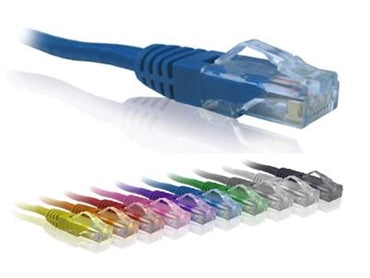Have you ever asked yourself; what is the difference between Cat 5e & Cat 6 Ethernet cables? They look & feel the same, and they both do the same job, right? - Wrong.
The difference relates to the design specifications & manufacturing of the cable & can be summed up in one word: Speed!
Bandwidth precedes data rates just as highways come before traffic. Doubling the bandwidth is like adding twice the number of lanes on a highway, thus allowing more traffic to travel at faster speeds.

The trends of the past and the predictions for the future indicate that data rates have been doubling every 18 months. Applications running at 1 Gb/s are really pushing the limits of Category 5 Enhanced cabling, which means now is the time to think about upgrading to CAT6.
Because of its improved transmission performance and superior immunity from external noise, systems operating over Category 6 (CAT6) cabling will have fewer errors compared to Category 5 Enhanced (CAT5e) for current applications. This means fewer re-transmissions of lost or corrupted data packets under certain conditions, which translates into higher reliability for Cat6 networks compared to Cat5e networks.
Certified CAT6 cables are fully backward compatible with CAT5e, CAT5, and CAT3. If different category components are used with CAT6 components, then the channel will achieve the transmission performance of the lower category. For instance, if CAT6 cable is used with a CAT5e switch, the channel will only perform at a CAT5e level.

